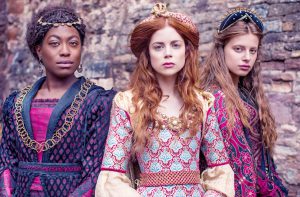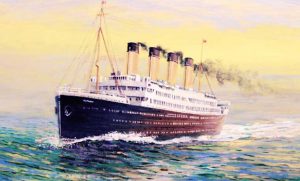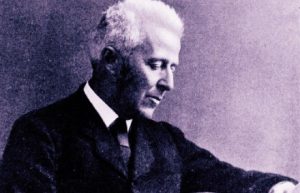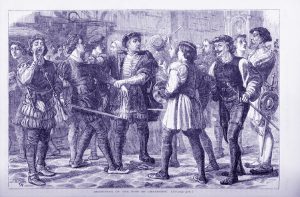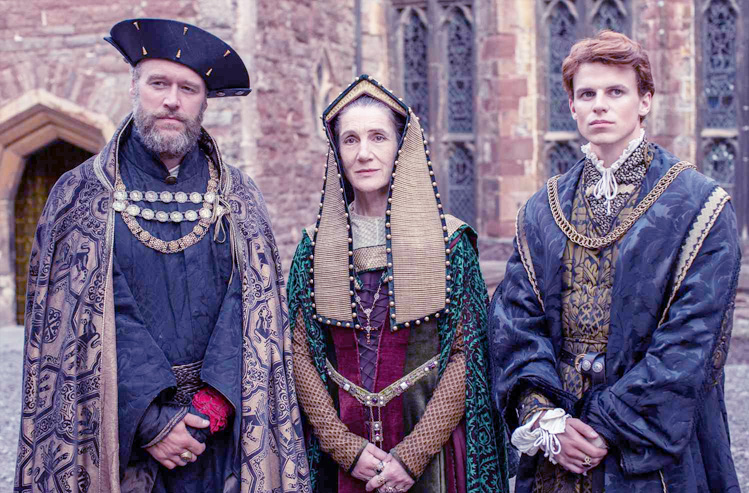
The Spanish Princess has captivated audiences with its lush costumes and dramatic portrayal of Catherine of Aragon’s early years, but how accurate is this Tudor-era television series when held up against the historical record? Based on Philippa Gregory’s novel, the show blends fact with fiction, often taking significant liberties with real events, characters, and timelines. In this essay, we’ll explore the historical inaccuracies in The Spanish Princess, separating the dramatized narrative from the documented truth about Catherine of Aragon, Henry VII, Elizabeth of York, Henry VIII, and the Tudor court.
With over 25 years of studying the Tudor period and a seven-book Tudor historical fiction series to my name, I bring a well-researched and passionate perspective to the lives of Henry VII, Catherine of Aragon, and the court that shaped them. If you enjoy peeling back the layers of fact and fiction in Tudor dramas, you’ll feel right at home here, and maybe even find yourself intrigued enough to explore my novels that bring this world to life in rich, imaginative detail.
Episode Three: An Audacious Plan
With her marriage in question, Catherine takes control of her narrative by forming a risky alliance. Her claim to the English crown hinges on a delicate secret, one that could change the course of Tudor history.
The Donkey Ride: Not If, But When
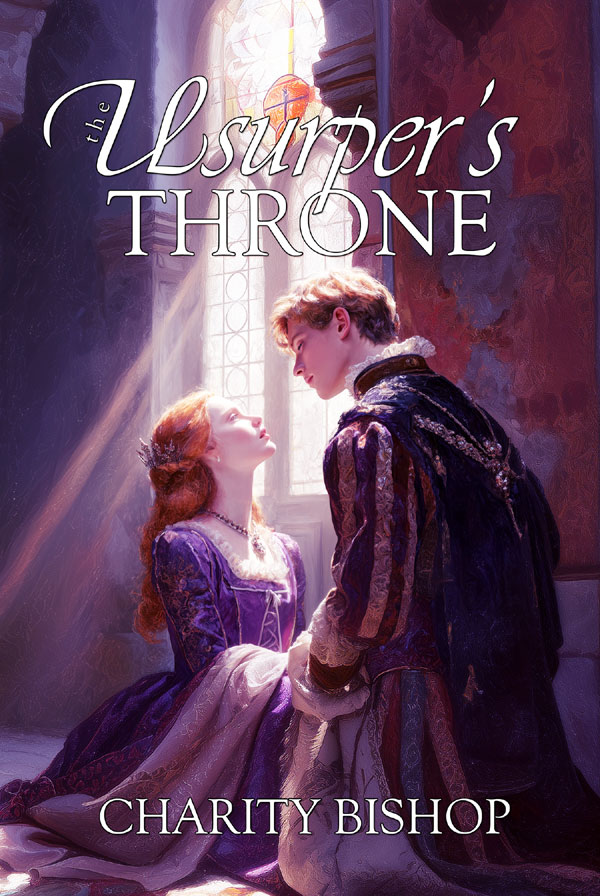
The show depicts Catherine entering London on a donkey, but as it happen after Arthur’s funeral. In reality, Catherine insisted on riding a donkey into London when she first arrived in England from Spain. It was a deliberate and pious act, grounded in Catholic tradition. Donkeys symbolized humility, religious devotion, and were associated with both the Virgin Mary’s journey to Bethlehem and Christ’s triumphal entry into Jerusalem. While English nobles typically entered cities on horseback to demonstrate power, Catherine clung to this expression of religious humility, despite pressure from English nobles to do otherwise. After Arthur’s death, she was in no condition for symbolic gestures, since she was recovering from pneumonia.
Arthur’s Funeral: A Study in Absence
The series muddies the waters around Arthur’s final rites. It shows him buried in London, attended by both his mother and widow. In reality, they laid him to rest in Worcester Cathedral, but none of his family attended. Monarchs and royal family members rarely attended funerals due to the belief that royalty had semi-divine status, and death was an uncomfortable reminder of their mortality. Nor did they want the populace to think about them in context with death (it might arouse feelings of rebellion, based on the idea that God’s anointed can still perish beneath a sword). There were also superstitions attached to death. Elizabeth of York visited her son’s grave later, in private.
The keening of Catherine’s Spanish ladies is historically plausible but unlikely. They would have expressed grief in different ways than the stoic English. Still, no royal women would have attended a public funeral like the one depicted here.
Margaret Beaufort: Tiger Grandmother, Not Matchmaker

In this episode, Margaret Beaufort pressures for her granddaughter’s immediate marriage to James IV. Historically, this is backwards. Margaret Beaufort, along with her son and daughter-in-law, delayed sending her granddaughter to Scotland for as long as possible. She was extremely protective of her granddaughters, likely due to her own traumatic childbirth experience at age thirteen. Margaret felt adamant that her namesake not consummate her marriage until she reached an appropriate age, and engaged in frequent negotiations with Scotland to keep her in England.
Even though the concept of marital rape did not exist in Tudor England, it’s unlikely that a thirteen-year-old Margaret consulted to her husband impregnating her. Given how avoidant she was of sexual intimacy later in her life (she made a political marriage, but insisted it remain celibate, to which her husband agreed), we would now diagnose her with rape survivor trauma. She would not want any of her granddaughters to experience what she did. I really hate that they made a rape survivor and a remarkable woman in her own right into a cartoon villain.
Anachronistic Touching and Feuding
The show’s continued portrayal of women behaving with modern emotional transparency feels jarring in this historical setting. Margaret Beaufort “feeling Catherine up” to find out if she’s carrying a child is absurd and undignified. In reality, pregnancy checks were discreetly handled by ladies-in-waiting, and high-born women of her rank would not lower themselves to such coarse behavior. She would have gone to Catherine’s ladies-in-waiting and asked if Catherine had bled since her marriage, and if there were other signs of pregnancy.
The constant antagonism between the women in this episode is also silly. While political tension certainly existed, these constant petty arguments do not reflect the refined cultural behaviors and norms of the Tudor court, where dignity and discretion were valued in public.
Catherine’s Virginity: Political Plot Device vs. Religious Conviction
he entire show hinges on Catherine lying about her consummation with Arthur, a claim the real Catherine denied to her dying day. This episode portrays her as manipulative and dishonest, traits at odds with the historical Catherine’s known integrity and piety. She was devout, and saw lying under oath (particularly before God) as a mortal sin. (Mortal sins, if you do not confess them in Catholicism, damn your soul forever.) She would not have lied about remaining a virgin at the risk of her eternal soul.
Chaste marriages were common among young couples, whose parents did not want a new union (with the money, estates, and titles it gave them) ruined by the death of the bride before she could carry a child to term. Margaret Beaufort getting pregnant at thirteen was a shocking scandal for the time. Many couples under the age of seventeen got married but did not share a bed or even a household until the parents deemed them old enough to consummate the marriage. This is why there was such a debate over whether to allow Catherine to go to Ludlow Castle with Arthur; the Spanish did not wish her to become sexually active, but Henry VII wanted to establish an authoritative English court in Wales.
Catherine had every reason to be cautious, since her brother Juan mere months died after his wedding, rumored to be from excessive sexual activity. Her parents, and the English monarchs, would have known about this. They wanted nothing similar to happen in England and threaten their alliance or the health of their children, who held the future of two dynasties in their hands.
Elizabeth’s Final Pregnancy: Condensed for Drama

The series has Elizabeth pregnant before Arthur’s funeral and give birth prematurely to a dead child. In reality, Elizabeth became pregnant after his death, likely from a shared night of grief with her husband. She entered her confinement (seclusion from the outside world, cloistered among her ladies, in which she could do nothing strenuous) and gave birth to a living daughter who died after ten days. She succumbed to a postnatal infection, likely puerperal fever (it’s caused by an infection in the uterus) that was tragically common before the invention of sterile medical practices. Henry would not have been with her at the time of her death, nor would her unmarried daughter have been present. They limited confinement to married ladies-in-waiting, so virgins would not see or hear anything inappropriate. (I will give them kudos though, in that her death on the show is absolutely horrific.)
Swordplay and Other Modern Fantasies
Catherine sparring with Henry is pure fiction. It’s cute, it’s flirtatious but it’s not historically grounded. Still, as a character moment, it works. Consider it a rare moment of fictional fun. I approve!
Less forgivable is the implication that Lena, a Blackamoor from Spain, is shocked to learn about the Spanish Inquisition. This strains credulity. A person of her background would have been deeply aware of the religious persecution that defined Spanish policy for decades, since her family would have suffered from it and might have even been forced to convert to Catholicism to keep their position at court.
Want the real story behind the drama?
This episode draws from the same turbulent period explored in two of my novels: The Usurper’s Throne, which follows Arthur and Catherine’s short-lived marriage and its aftermath in the halls of Ludlow Castle, and The Queen’s Falconer, where Elizabeth’s final, fateful confinement and a treasonous conspiracy brewing within the English court unfolds. And I explore Margaret’s marriage to James VI in The Last Fire-Eater. If you’re intrigued by the real people behind the fiction, with all the depth, danger, and nuance the show leaves out, step into the world of The Tudor Throne Series.
